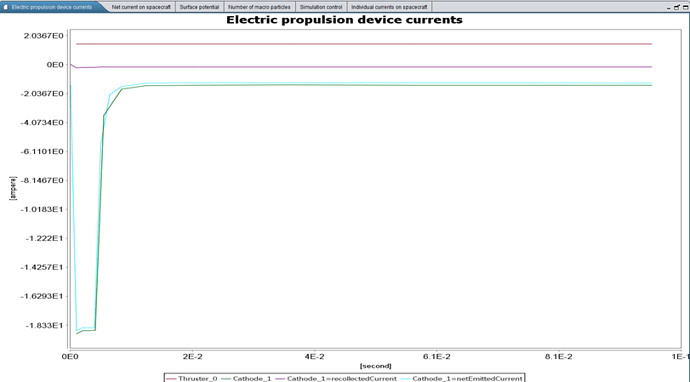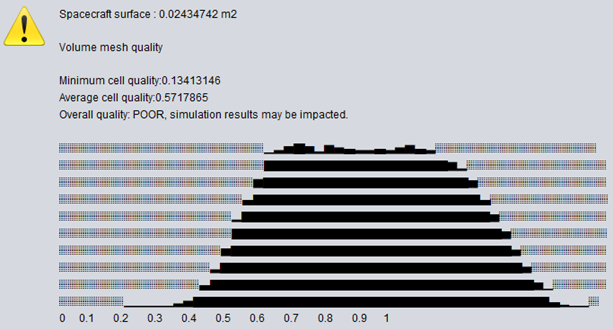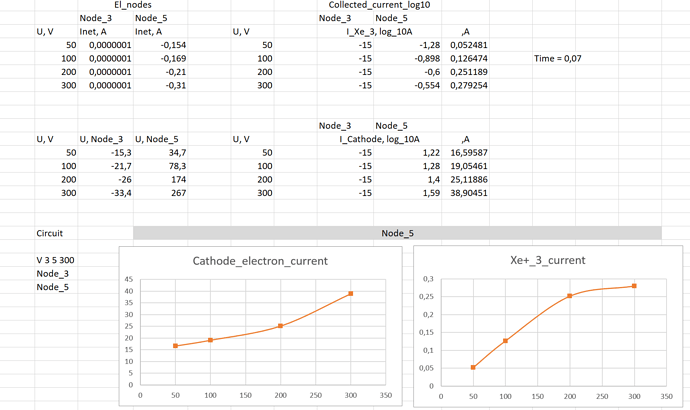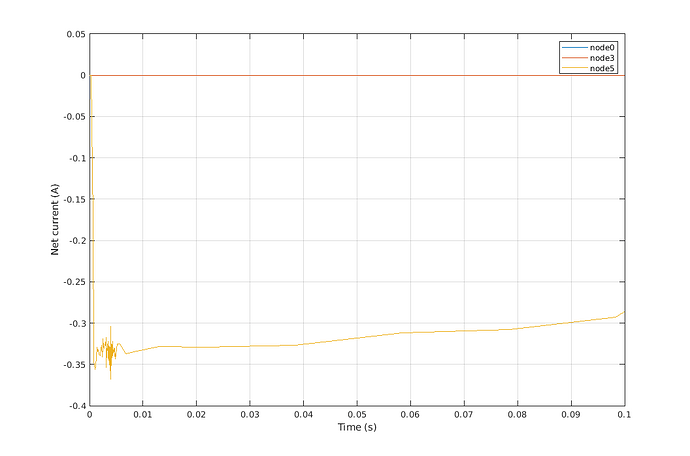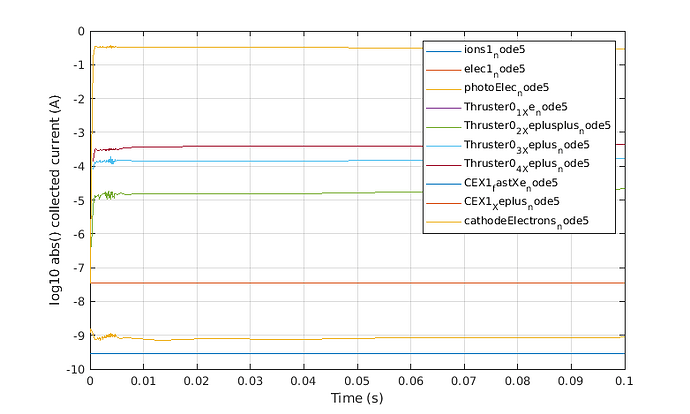Hello everyone!
I work in a laboratory with Hall thrusters, and it just so happens that I need to understand what current of ions and electrons (especially electrons) flows to the surface of a spacecraft under a potential comparable to the accelerating potential of the thruster. We have already conducted an experiment in the laboratory and obtained linear volt-ampere characteristics of probes in plasma, i.e. the dependence of current on voltage on a flat probe located in the thruster plasma. And we obtained linear characteristics, where, logically, the electron current goes to the positive potential, and the ion current to the negative. But when modeling the same situation in SPIS, I encountered the fact that the net electric current to the nodes corresponding to the flat probes does not coincide at all with the experimental results. Moreover, it is not clear whether the electric current in the circuit is closed correctly. The electric circuit is as simple as possible: between nodes 3 and 5 (these are electrodes - probes) there is a potential difference, for example 50, 100, 200, and 300 Volts. How can I understand what current flows between nodes 3 and 5? If you look at the currents on the surface, it turns out very strange: When the potential of the electric field (positive) on the probe decreases, the ion current for some reason decreases, although it should, on the contrary, better get to the surface and increase accordingly. If anyone has encountered such a situation, then please explain how electric circuits work, how to see what current flows in them?
I am attaching the calculation files of the model at this link: SPIS-EP Current – Google Drive
And some pictures:
Exel file inside g-link.
Thanks in advance for your reply, advice or any help!

